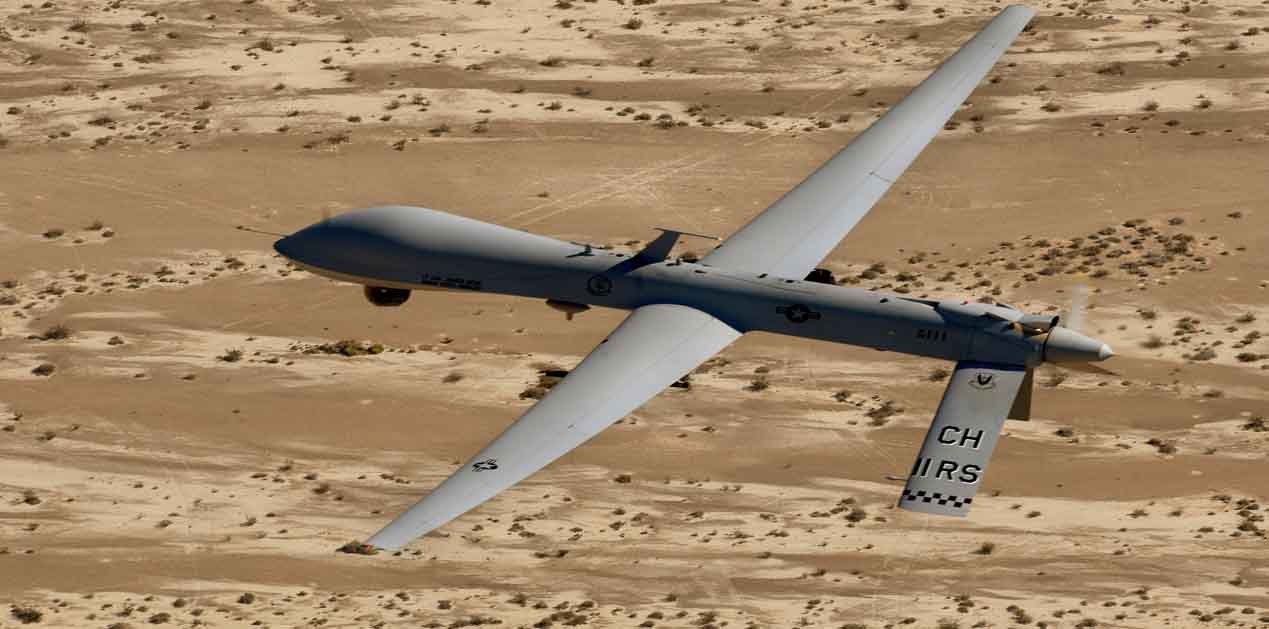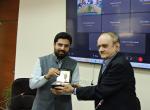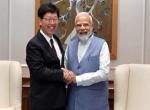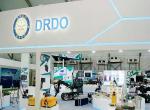Ever since the arrival of the unmanned aerial systems (UAS) on the scene, the battlefield has never been the same. In that, on one hand the attackers are exploiting many of the combat capabilities of UAS, the defenders are busy in harnessing new technologies of combating the unmanned threat through cost-effective solutions. While this eternal duel goes on, niche technologies like stealth, nano, artificial intelligence, morphing, lighter than air machines, passive sensors, soft-kill weapons, and more, are revamping both the attackers, as well as, the defender's camps. The latest buzzword in the unmanned world today is MuMT, which stands for Manned and Unmanned Teaming. It is that win-win situation where the intellect, grit, instant decision making capability and the hunch of the combat pilot are being combined with the precision, endurance and all-weather, all-terrain capability of the unmanned machines. The gains are disproportionate and multiplicative.
How did the UAS get this far from a very humble beginnings is a fascinating journey which this work tries to unfold briefly. In fact, historic evolution of UAS has been marked by a series of inconsistent periods of technological development followed by stagnation and long periods of dormancy. The initial, tough resistance to the ‘unmanned’ vehicles was mainly from the pre-pilot lobby who maintained the position of ‘Air Force for the Pilots,’ also famously called the ‘White Scarf Syndrome’1. Anything that had something to do with ‘aircrafts without pilots’ was simply despised, until a more ‘tolerable’ terminology, Remotely ‘Piloted’ Vehicles (RPVs) got into use. The term RPV had a wee bit of acceptability in the pilot community since the same retained the primacy/presence of the ‘pilot’, albeit at the Ground Control Station (GCS).
UAS, RPVs or Drones made visible presence during and shortly after World War I2. Some famous names come to mind; M Low’s Aerial Targets based on radio controlled techniques, Hewitt Sperrys’ Automatic Airplane, also Known as ‘flying bomb’ and the Kettering Bug, the Aerial Torpedo. During the inter-war period, the development of radio controlled target drones continued unabated. DH82B Queen Bee drone and several others made news in the 1930’s. During World II, RPVs or drones appeared in large numbers. The Radio Plane Company of Reginald Denny in UK (where Miss Norma Jeane, later to become the famous actress Marilyn Monroe, was spotted and photographed at her job) made about 15,000 drones for the Army during the War. The period 1928-30 also saw some UAS with infra-red and TV based guidance through optical control. However, up to and around this time, the concept of assault drones remained largely unproven3.
The Cold War years saw the piston-powered target drones being used as Basic Training Targets for air defence gunners. The first reported use of drones as decoys was the Mc Donnell Douglas ADM-20 Quail, which was carried by Boeing B-52 Stratofortress bombers to help them penetrate the defended air space. In an another first, B-17 Flying Fortresses were transformed into drones to collect samples from inside the radioactive cloud wherein they were flown directly above the explosion. Around the mid 20th Century and thereabout, reconnaissance and spy drones of various types, ranges and capabilities came to be used in a big way.
During the Vietnam War, a large number of RPVs were used by the Americans in a large variety of ¬¬¬missions. AQM34, Lightening Bugs, Compass Copes, Ryan Fire Bee etc. undertook huge numbers of 3435 missions (from Aug 1964 to Apr 1975) spanning a wide variety of roles from photo reconnaissance, jamming SA-2 Surface-to-Air Missile (SAM) sites, leaflet dropping (Litterbug), ELINT and SIGINT missions, and creating chaff corridors to confuse enemy radars. The entire vertical span from 500 ft to about 60,000 ft was spanned by various RPVs.
During the Yom Kippur War, the Israelis used Teledyne Ryan 124 R RPVs along with the home-grown Scout and Mastif UAS’s for reconnaissance, surveillance and as decoys to draw fire from Arab SAMs. This resulted in Arab forces expending costly and scarce missiles on inappropriate targets4. In the Bekka Valley as well, the Israelis made extensive use of RPVs. As per a report, the Israelis put mini RPVs ‘on station’ over Syrian airfields using TV cameras to monitor runway activity and transmitting real time information to affect successful interceptions. Israelis also employed other types of unmanned aircraft like Samson and Delilah as decoys. The RPVs with enhanced radar cross-section (RCS) confused the Syrian air defence systems which mistook these RPVs as Israeli strike aircraft launched most of their SAMs on them5.
During Operation Desert Storm, the US used a variety of UASs (Israeli Pioneer, Pointer, Midge, Mar, Exodrones etc) for a large number of tasks which included pre-ingress route reconnaissance, chemical agent detection, battle-damage assessment, signal intelligence (SIGINT) and communications intelligence (COMINT) missions, reconnaissance, surveillance and Command, Control, Communications, Computers, Information & Intelligence (C4I2) missions, directing naval gun fire etc. During this war, one of the most unusual surrenders took place when a Pioneer RPV came over the battlefield to survey potential targets and when five Iraqi soldiers waved flags at its tiny television camera. It was probably the first time in history when men surrendered to a robot6.
North Atlantic Treaty Organisation (NATO) forces in the Bosnian conflict used the Tier II Predator UAS with one feet resolution Synthetic Aperture Radar (SAR) to monitor the enforcement of ceasefire. Specific tasks included detection of movement of ammunition at night and detection of tampering of mass graves by Bosnian Serbs at night7. During the Kosovo conflict, Kosovo Force (KFOR) made extensive use of German multirole UAS Luna, for real time video dissemination of target information. Based on the reconnaissance by the UAS, strike aircrafts were launched to neutralize the detected targets. Besides support of air war, UAS were also used in border surveillance, monitoring ceasefire compliance, combat smuggling and illegal border crossing etc8.
During Operation Enduring Freedom, allied forces made extensive use of UAS. Following the successful integration of Hellfire missiles on armed version of Predator UAS, these potent machines saw action in this operation for the first time. In addition, High Altitude Long Range (HALE) RQ4A Global Hawk UAS was also used extensively. The inputs from Global Hawk and Predator were linked with RC-135, U2, E-8 and other sensor platforms. This enabled combat surveillance of enemy activity and contributed significantly in shortening the kill chain. The UAS’s remained on station for long durations, enabling instantaneous attacks upon locating a target, matching it with a weapon and observing the resulting effect. Predator UAS teamed up with helicopter gunships to provide highly accurate weapon delivery on the ridgelines. This probably marked the first operational employment of an manned and unmanned platform together in the same mission in a synergetic mode. Large scale move of Al-Qaeda and Taliban fighters towards Shah-i-Kot mountains and their assembling and re-equipping was picked up by Predator UAS resulting in the launch of Operation Anaconda.
In Iraq, as also in Afghanistan, multiple in and out-of-theatre GCS’s were used to simultaneously control a number of Predator orbits over battle space providing great flexibility to ground commanders. These UAS were operated with ‘pilot-in-the-loop’ concept where US Air force UAS pilots sitting in California controlled aircrafts and mission payloads via satellite data link and distributed imaging and intelligence products on Global Intelligence networks.9,10
During Operation Iraqi Freedom, the allied force used at least eleven types of UAS, Predator, Global Hawk, Reaper, Shadow 200, Hunter, Pointer etc, to name a few. Finder UAS, capable of carrying out chemical and biological sensors was used for sniffing the air over Iraq. Hellfire equipped Predators were very successfully employed to take on chosen targets with precision or to hunt down terrorists in hunter-killer operations. According to statistics, the Global Hawk in ISTAR mission located at least 13 SAM batteries, 50 SAM launchers, 300 canisters and 70 missile transporters. It also imaged about 300 tanks, nearly 38 percent of Iraqi armed forces.11,12
The operational use of weaponised UAS could either be in the direct support of military operations as discussed above, or in hunter-killer missions (also referred to as search-and-destroy missions) implying searching and hunting down terrorists from their hideouts. While the former operation normally unfolds in recognised military areas, the latter trespasses civilian areas with huge collateral damages. The Global War on Terror (GWOT) in Afghanistan-Pakistan region, has witnessed a huge increase in the hunter killer missions using armed drones like Predator etc. It has taken 16 strikes, 14 months and an additional 207-321 additional deaths to take out the dreaded terrorist Baitullah Mehsud, the leader of Pakistani Taliban13.
On the issue of drone casualties, the whole world is crying hoarse on the loss of innocent civilian lives in the drone phenomenon. 'Reprieve', an organisation of front line lawyers and investigators in US working for people world wide suffering from extreme human rights abuses at the hands of powerful Governments has assessed that for every intended target an average of 28 innocent (unknown) lives are being sniffed out in drone strikes14. In fact the reality is, that notwithstanding the strong resistance in the public space world over regarding the issue of civilian casualties during drone strikes, the use of the UAS continues unabated in many a 'conflict stations' of the world – Pakistan, Afghanistan, Iraq, Yemen, Libya, Somalia, Iran, Philippines, Syria et al.
Thus goes the fascinating journey of the UAS as chronicled briefly from World War 1 days to the current era of hunter-killer missions, MuM-T, stealthy, nano, micro mini versions of unmanned - and more...
References
1. Carl Builder, ‘The Icarus Syndrome : The Role of Air Power’, ‘New Brunswick, NJ : Transaction Publishers, 1994.
2. http://www.thenation.com/article/166124/brief-history-of-drones.
3. Taylor, AJP, ‘James Book of Remotely Piloted Vehicles’.
4. http://www.gloria-centre.org>MERIA>Israel;‘Unmanned Aerial Vehicles in the Service of the Israeli’.
5. http://www.airforce.magzine.com/magzine archive/pages/2002/Jun 2002/0602.bekka.aspx, ‘The Bekaa Valley War’.
6. http:// www.pbs.org/wgbh/pages/fronttime/gulf/weapons/drones/htm.
7. http://www.ukessays.com>Dissertation>Military; ‘Employment of UAS in Sub Conventional War’.
8. http://www.nato.int/KFOR/docu/pr/2003/10/07.htm/use-of-unmanned-air-vehicle-by-KFOR.
9. http://www.defence-update.com/products/p/predator.htm.
10. http://www.en.wikipedia.org/wiki/history-of-unmanned-aerial-vehicles.
11. http;//www.iar.gwu.org/node/144/drone-wars :armed-unarmed-aerial-vehicles-international-affairs.
12. http://www.en.wikipedia.org/wiki/history-of-unmanned-aerial-vehicles.
13. Andrew Callam, “’Drones Wars : Armed Unmanned Aerial Vehicles’, International Affairs Review Volume XVIII, No3.
14. http://www.reprieve.org.us-drone-strikes
(Views expressed are of the author and do not necessarily reflect the views of the VIF)
Image Source: https://nypost.com/2014/05/17/evolution-of-the-drone/








Post new comment